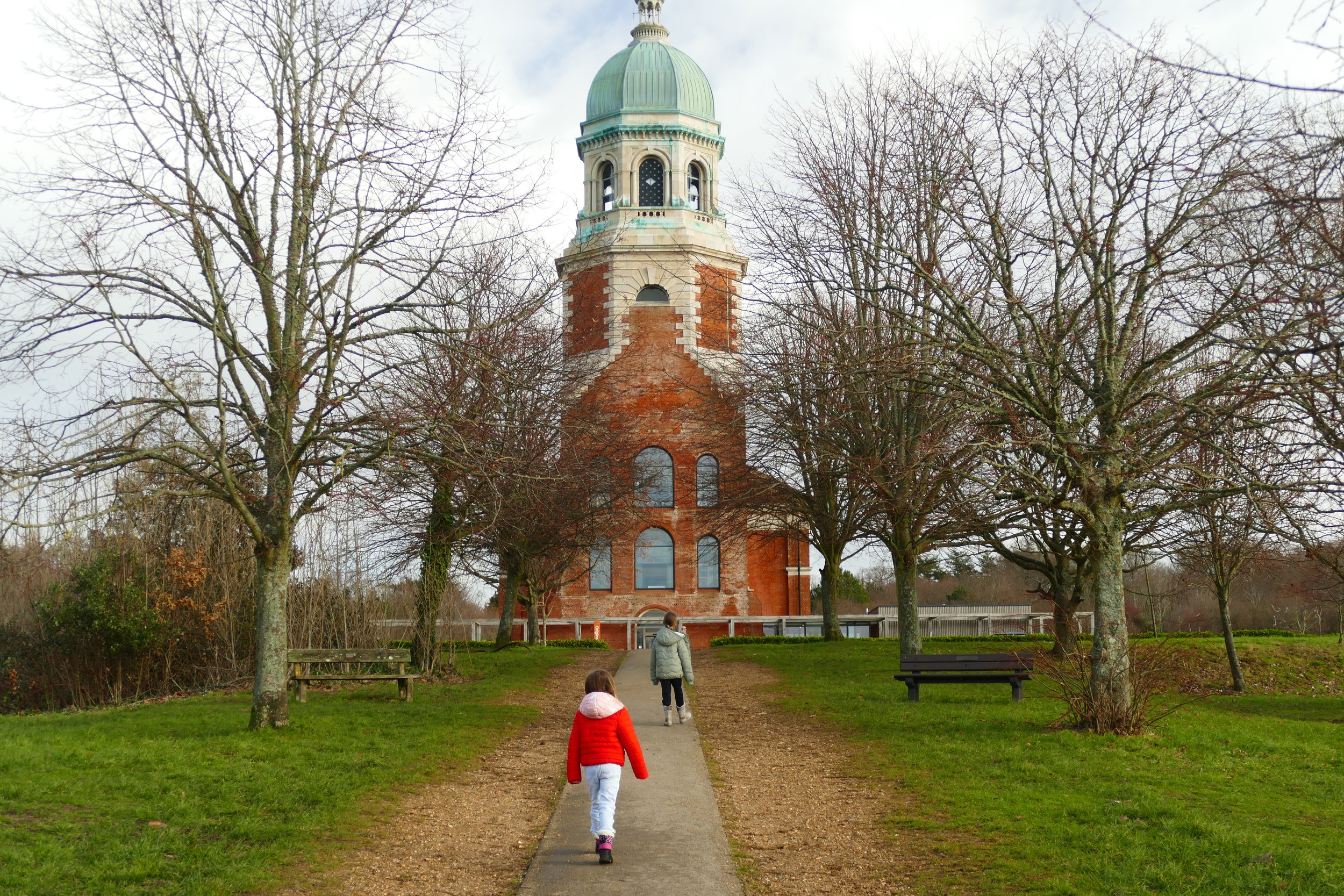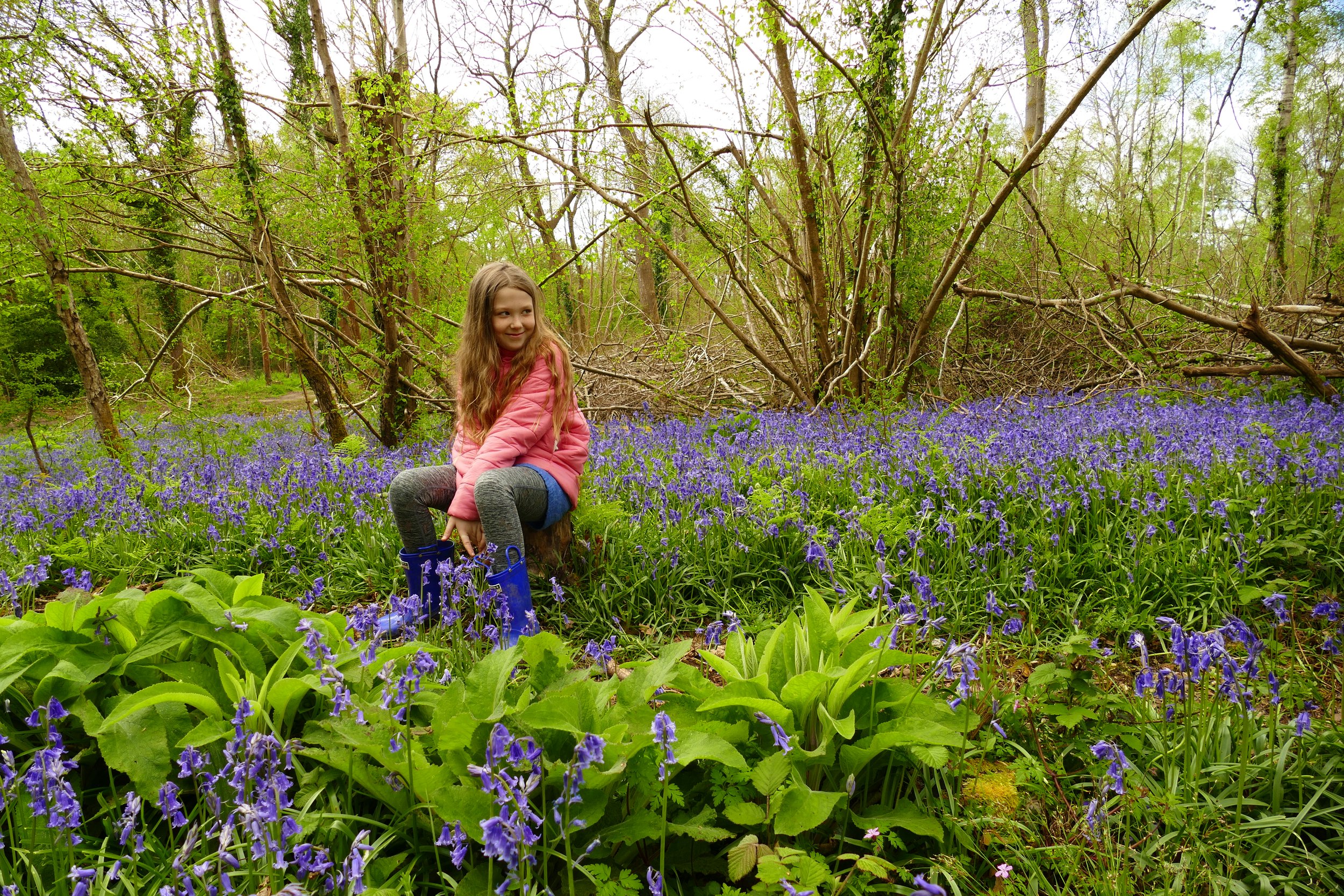Beautiful Bluebells
Did you know that almost half the world’s bluebells are found in the UK?
There are few places in the world quite so enchanting as a British woodland in spring and much of that is owed to these delicate little flowers. We have spent the last few years researching this list of walks where you will find some of the best displays of bluebells in Hampshire, Surrey and West Sussex.
Please enjoy them whilst doing your bit to ensure they will still appear for years to come; stick to the paths and never stand on their leaves. Where they have been trodden on, the plants will fail to regrow the next year. No photoshoot is worth the loss of this protected species and remember it is in fact illegal to pick wild bluebells.
Hampshire
Forest Holidays run woodland cabins at the site, but anyone can visit and use the facilities such as café and small play area.
The bluebells can be found on pushchair friendly, marked trails.
Start from the country museum and cafe, pass the impressive Breamore House, follow the path through bluebell woods and arrive at hilltop views with a mysterious mizmaze.
The bluebells line the path up to the mizmaze, spreading as far as the eye can see.
As you walk through the woodland of Catherington Lith, try to find all the hidden wooden sculptures. Stop at the pub or picnic paddock on your return.
The best bluebells are at the entrance to the lith and are mixed with yellow celandine and white wood anemone.
Follow in the footsteps of Jane Austin and walk in her local woods. There is a mixture of ancient and coniferous woodland to explore.
The bluebells are found beneath the beech trees - use our guide to help you find them.
Easy flat paths guide you around this woodland walk. There aren’t any refreshments on site, but there is a super farm shop and tea-room nearby.
The best displays of bluebells are on the nature reserve side of the woodland.
This is probably the most prolific and widespread display in Hampshire. But the breath-taking beauty does come with a price. The car park is small and fills up fast and you are likely to encounter photo shoots and some lack of respect for the flowers.
The bluebells can be found in their thousands throughout the woodland, but get walking to leave the crowds behind.
We haven’t actually been here during bluebell season, but we know it to be a good place to find them. The play areas have recently been upgraded so there is something for everyone.
If you follow our route, the bluebells will be found in the woodland nature reserve section of the park.
There is an excellent pushchair friendly trail around these woods, but if you want to see the bluebells, you will need to ditch the buggy as they are found in a wooded valley with rough paths crossing over a stream.
Follow the bluebell walking route detailed in our guide or on noticeboards beside the car park.
This country park has a café, a play area themed around a pirate ship and a pontoon over the River Hamble that is great for crabbing. It also has acres of woodland that puts on an impressive show of spring flowers.
The bluebells are mixed in with species such as celandine and wood anemone and can be found in Dock Copse.
This country park offers plenty to do and see including a museum, play area, train and shoreline. But from mid April to May, there is an additional attraction in the bluebell woods.
The bluebells are easy to find on a short walk through the woodland at the north of the park.
Upperford copse is part of the wider Forest of Bere and can be accessed as part of a longer walk or it has a car park of its own.
The bluebells fill every inch of the copse and a circular walk here is quick and easy.
This is another walk where the bluebells are the icing on the cake of an already wonderful adventure. The route starts by a shoreline park and picnic area and ends at the free to enter, magnificent ruins of Netley Abbey.
The best bluebells can be found towards the northern end of the woods.
This walk follows a delightfully quiet woodland nature reserve set on the side of The River Hamble estuary. Look out for the fairy tree adorned with offerings for the small folk; the magic is all the more authentic when the tree is surrounded by bluebells in spring.
The bluebells are scattered throughout the wood among white wood anemone.
Starting from the excellent Peel Park, follow our route along bridleways that loop around the village passing two bluebell woods. You will pass by a pub before returning to the start.
The best bluebells are found in Little Hyden Wood where there is extremely limited parking, so following our walk to view them is highly recommended.
Rowhill is a well cared for nature reserve of mainly secondary ancient woodland on the border between Hampshire and Surrey. There is a well marked nature trail to follow.
The largest number of bluebells can be found in the coppiced chestnut glade.
The lovely village of Rowlands Castle has a brilliant new play area, three pubs, a large green, a coffee shop and access to Stansted Forest.
The bluebells can be found in the coppiced woodland along the first path through the forest.
Easily accessible from Farley Mount Country Park, this woodland has a variety of bluebell habitats.
The bluebells can be found along a path from the monument, with fabulous views along the way.
A secluded nature reserve between Brockenhurst and Boldre hides a wide shallow ford in woodland where children can play.
The bluebells can be found throughout the ancient copses and on the permissive paths.
Surrey
This is a pay to enter attraction, but for a modest rate you get a walk with some of the most imaginative play equipment we have ever seen.
We visited in summer when sunflowers were the draw, but in spring the woods are full of bluebells.
We recommend spending a whole afternoon in Dunsfold as after our woodland walk you can enjoy the rope swing on the green, the swans, the pub and the sublime village play area.
The bluebells are mixed in with one of the most spectacular shows of wild garlic we have witnessed.
Winkworth is managed by The National Trust and you will need to book tickets for this one. It is well worth the money, not just for the bluebells but also for the woodland play area and other spring flowers such as the camelias.
The bluebell woods are located on the hillside overlooking Badger’s Bowl.
Only a stone’s through from Guildford town centre, this woodland is an absolute treat. The bluebells stretch into the distance, as do the views of the Surrey Hills.
The best bluebells can be found on the southern side of the woods.
Godalming is a gorgeous Surrey Hills village with all the components of a great village walk including pond, church, green, coffee shop, play area and historic pub.
The bluebells can be found in woodland along the walk that circles the village.
Climb the wooded hillside to find a grade two listed tower at the top, then return to climb and balance on the natural play trail at the bottom.
The bluebells can be found in the woodland that surrounds the lower slope of the hill - follow the signs for the bluebell walk.
Start at Manor Farm tea room for an easy walk around the village and surrounding woodland and countryside.
One very lucky landowner has banks of bluebells growing at the end of their property and as the footpath runs straight past them, walkers can enjoy the bluebells too.
West Sussex
Parking is very limited at the start of this walk, so time it well. The trail passes beech woodland but also Nore Folly which is a great spot for a picnic with views to the coast.
The bluebells fill Nore Wood which is managed by The National Trust. They usually erect rope barriers to protect the plants from footfall.
For much of the year, visitors pass by these woods on their way to a nearby showstopper of a walk at Kingley Vale. But for a few weeks in spring, the woods become the star of the show.
The bluebells will be visible as you drive along the road. Park up and enjoy!
The woodland here is privately owned, but there is a vast network of public paths with the added bonus that they are well surfaced and mud free.
The bluebells can be found in most of the estate’s woodland. Our route focusses on Wepham Wood.
There is lots of interest for children on this little amble around the pretty village of East Dean. They will love the milkshake vending machine and the totem pole!
There are a few drifts of bluebells on the woodland stretch of this walk.
The star of the show at this peaceful wood is possibly the wild garlic, but if you are looking for a bluebell fix in the area, you certainly won’t be disappointed in those either.
Get back to nature in this hidden away nature reserve. You will see few signs of modern life, but you will see bluebells and other woodland flowers. Keep an eye out for the swing!































